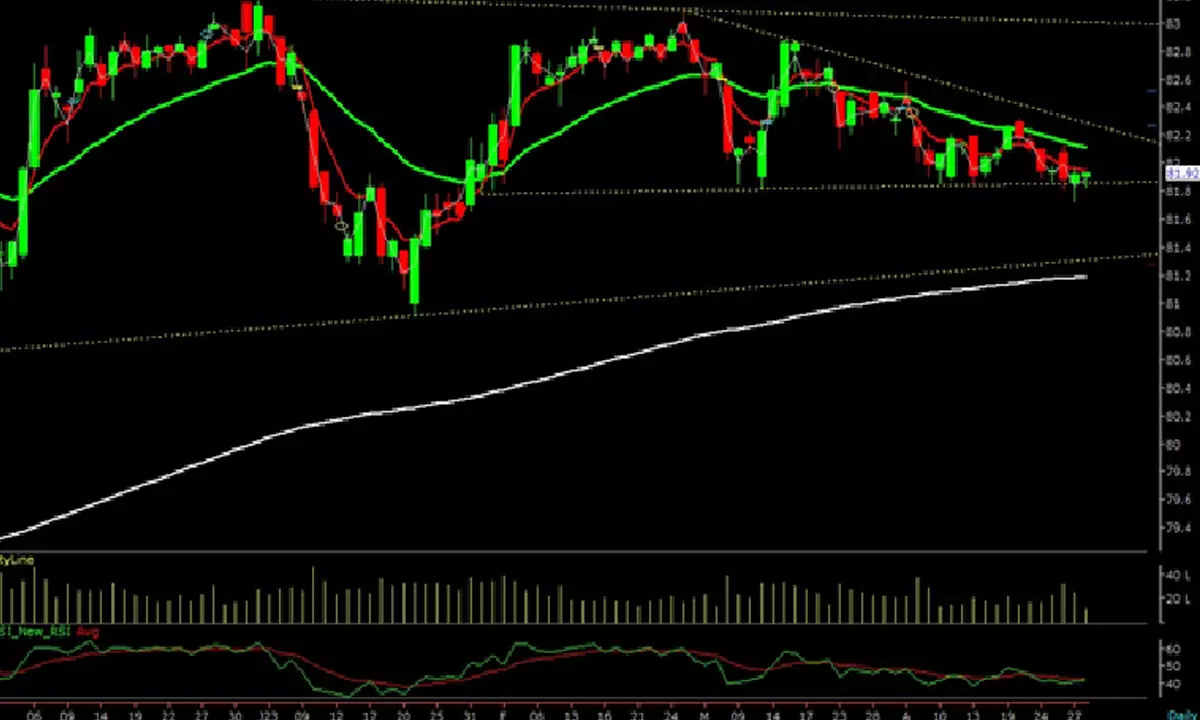Greenback falls against Indian Re for 2nd mth
US Federal Reserve considers ending aggressive tightening campaign; Meanwhile, euro extended gains against home currency reaching a one-year peak
image for illustrative purpose

Hyderabad: The US dollar declined against the Indian rupee for second straight month as the US Federal Reserve considers ending its aggressive tightening campaign, according to a latest report from SMC Global Securities Ltd. Recent economic data shown the slower than expected growth in the US economy as rising interest rates affecting the housing market and business investment growth slowing down. However, consumer spending has remained resilient, while inflation has risen to a one-year high.
Meanwhile, the euro has extended gains against the rupee, reaching a one-year peak, as the ECB is expected to continue leading monetary policy tightening among major developed market central banks. This has resulted in investors dumping the dollar due to banking risks and the debt ceiling standoff in the US. The Japanese yen also weakened against the rupee, with the Bank of Japan maintaining its ultra-easy monetary policy and making no adjustments to its yield curve control.
Tapish Pandey, research analyst at SMC Global Securities Ltd, said: “Looking ahead, the USDINR has broken down below its major support zone of 82 mark and is currently trading well below this level, indicating continued weakness for the pair. The next major support level is placed near 81.40, which coincides with an upward-sloping trend line and is just above the 200 days Exponential Moving Average. This support zone is particularly important and could provide a strong foundation for the pair to potentially reverse its current downtrend. If the dollar rupee does correct towards this support zone, we can expect the Relative Strength Index (RSI) to be near or below 30, which would indicate an oversold condition and increase the likelihood of a reversal as well as RBI intervention.”
However, if the USDINR manages to sustain above its major short-term 21 days Exponential Moving Average around 81.12, it could potentially resume its upward rally. This level is currently acting as resistance for the pair, so a sustained break above it could lead to renewed buying interest and push the pair higher, added Pandey.
US economic growth slows down in Q1
The US economy experienced a slowdown in growth, with the GDP growth rate dropping from 2.6 per cent in March 2023 to 1.1 per cent in April 2023, missing market expectations of a two per cent growth. Additionally, the inflation rate, as measured by CPI, remained high throughout the year, reaching 9.1 per cent in July 2022. In response, the Federal Reserve has increased the Fed Funds Rate from one per cent in May 2022 to five per cent in April 2023.
“While this may have helped to control inflation, it has also put pressure on businesses, as borrowing costs have increased. The Fed is expected to pause interest rate hikes after increasing the policy rate by 475 basis points since March of last year to the current 5.25 per cent level, as the aggressive rate hike to maintain high inflation is now hurting economic growth,” observed Pandey.

